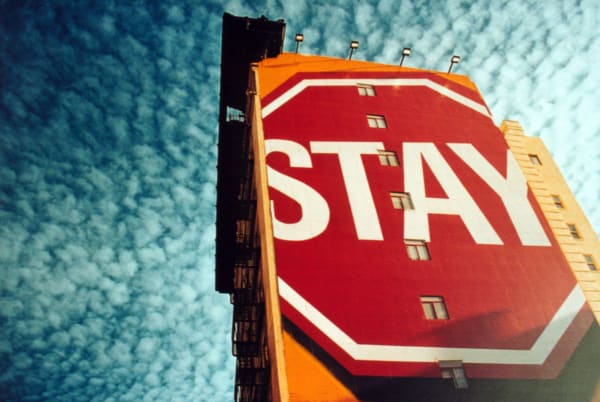An American Cross Section: Butler Gallery, Ireland
Travel has long been an inspiration for art and from the solitary walker of the Romantic canvas to the beat generation poet, being on the road has been as much a route of the imagination as a record of reality. It is a privileged perspective, the lone artist's version, and sometimes vision of events. If Eamon O'Kane takes his cue from these artistic adventurers, his work marks a significant departure from the heroic genre of a young man gone west. American Cross Section is a project begun with the conceptual rigour of an artist such as Sophie Calle and ending in an exhibition of astonishing physical presence worthy of the New York School.
'An American Cross Section
Travel has long been an inspiration for art and from the solitary walker of the Romantic canvas to the beat generation poet, being on the road has been as much a route of the imagination as a record of reality. It is a privileged perspective, the lone artist's version, and sometimes vision of events. If Eamon O'Kane takes his cue from these artistic adventurers, his work marks a significant departure from the heroic genre of a young man gone west. American Cross Section is a project begun with the conceptual rigour of an artist such as Sophie Calle and ending in an exhibition of astonishing physical presence worthy of the New York School.
O'Kane planned a journey across fourteen American states documenting his preconceptions of the US before his departure and continuing his journal throughout his travels. These writings evoke personal memories, moments from the artist's past that remind us that the actual encounter with a new environment will always be suffused with our individual histories. The paintings suggest this layering of memory and experience with a multiplicity of images, concatenating visual levels that present the viewer with simultaneous ways of seeing the same place. Here O'Kane explores the idea of each American state - their representation in tourist brochures and popular myth as well as literally drawing on their geographic location through delicate tracing of maps across each of the paintings. Famous landmarks are drenched in colour, submerged in the image, floating between icon and memory. Indeed the sheer size of the paintings puts the viewer in a very physical pose, measuring our personal relation to the work as part of our experience of the exhibition.
O'Kane further explores the relations between ambient experience and pictorial realism with the juxtaposition of photographic images and sound - the use of sound in particular evokes a moment recorded in the past, a device enhanced by the negative and positive photographic images that situate the viewer between different viewpoints so that even among the most 'real' of representations, we are suspended in place, as much as in time. O'Kane's ability to steer a course between idea and sensation, virtual and real, verbal and visual, is not a perpetuation of traditional mind/body dualisms but rather their collapse into a complex weave of images. This collapse, however, does not result in a Baudrillardian simulacra, a virtual world with no referent to the real, but rather a profound investigation into the nature and relation of the real to its representation and perhaps more importantly, how we read the real in relation to received images of place.
As the title American Cross Section suggests, the work in the exhibition is both an analysis, a meeting point and a representative study. The work may be the result of O'Kane's travels, his view and experience of the US, but above all it is an insight into the way in which we all travel and apprehend the world, and the journey through the exhibition becomes a valuable navigation of our own understanding of place.
Fiona Kearney, Director, Lewis Glucksman Gallery, Cork, Ireland, 2000







